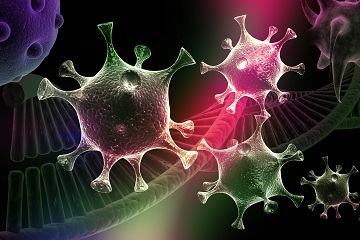European researchers make advances in HIV and cancer detection

Related topics
Health Innovation Funding Researchers European Research Council Marie Skłodowska Curie actions Health, Demographic Change and Wellbeing Nanotechnologies United Kingdomdate: 23/01/2014
Project: Minerals Integrated into Multiple Identi...
acronym: MIMIC
See also: Info-centre
Contact: http://erc.europa.eu/erc-stories/na...
The EU-funded MIMIC project is currently working towards a breakthrough in cancer diagnostics which is based on an ultra-sensitive detection system that is able to pick up minute concentrations of disease-related molecules in body fluids. The method it uses draws on the body’s natural processes of biomineralisation – the production of minerals.
A similar diagnostic approach to that being used in MIMIC’s cancer research has already proven effective in detecting HIV/AIDS. Dr Roberto de la Rica Quesada, the MIMIC project coordinator, and Professor Molly Stevens, a European Research Council grantee at Imperial College London, have successfully tested a pioneering HIV-detection technique that is ten times more sensitive than any identification method used to date.
This HIV breakthrough is a triumph for the diagnostic approach MIMIC first developed for cancer detection, which went through a number of stages of development and design before successful results were achieved.
The project plan originally involved the recreation of bone mineralisation conditions in order to fabricate ultra-sensitive sensors via the production of calcium phosphate crystals. By adding antibodies to this process, these sensors could then clearly identify the disease 'biomarkers' – the tell-tale signs of diseased cells. Once the crystals are formed, their development and recognition actions can be detected by electrodes.
The presence of the crystals on the electrodes is detected as the signal of the bioassay which, for scientists, is a way of studying or picking up the signs of cell change: the stronger the signal – and the better the ability to ‘sense’ it – the greater the chances of detecting disease. That makes it sound simple, but this “bio-recognition and detection” is extremely complex, according to the team carrying out the research.
As MIMIC progressed, the project coordinator, Dr de la Rica made the decision to grow metal nanocrystals rather than the traditional calcium phosphate crystals as a way to generate a signal. These intensely coloured crystals possess outstanding optical properties and provide signals which are clearly readable or visible with standard lab instruments and even the naked eye. This was one of several decisions aimed at bringing the complexity of the problem down to manageable steps.
The team also decided that with this new concept it would not be necessary to use a 'biopolymer', such as collagen, to grow the crystals. This meant the sensor design would be further simplified. “There is also no need for the electrodes or other expensive equipment because the signal can be seen without them. Apart from this, the rest of the concept remains the same,” Dr de la Rica says.
Catching disease early
Dr de la Rica explains that while MIMIC’s work does not improve cancer treatment per se, it can improve its diagnosis. “Since it can detect cancer-related molecules at ultra-low concentrations, it might be possible to detect the tumour at a very early stage before it spreads and becomes a bigger threat,” he notes.
The scientist reveals that the process has already shown potential in detecting cancer reoccurrence in prostate cancer patients. “Patients who have undergone total prostatectomy may benefit from ultra-sensitive systems that can detect the prostate-specific cancer biomarkers at much lower concentrations and provide early warning that the tumour is reappearing,” he says.
The project’s research has already attracted interest from industry. “The nano-detection systems proposed in MIMIC could be easily commercialised,” confirms Dr de la Rica. Similarly, this also applies to the HIV identification method which also offers a much simpler and cheaper naked-eye-based read-out which could be commercialised and would enable much earlier diagnosis of the disease.
Writing in Nature Nanotechnology, Dr de la Rica and Professor Stevens also state that affordable methods for detecting disease biomarkers at ultra-low concentrations can potentially improve the standard of living in countries lacking costly medical resources.
Current strategies for ultra-sensitive detection often require sophisticated instruments that may not be available in laboratories with fewer resources, they noted. “We circumvent this problem by introducing a signal-generation mechanism for biosensing that enables the detection of a few molecules of analyte with the naked eye.”
The researchers’ work has been reported in major scientific publications but has also attracted the attention of media outlets such as the BBC and Daily Mail in the UK. What’s more, the strong commercial potential and ground-breaking nature of their work in both cancer and HIV could provide a valuable boost to the competitiveness of the EU in the fields of health care and nanotechnology.
